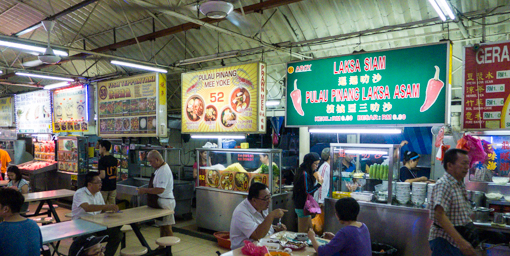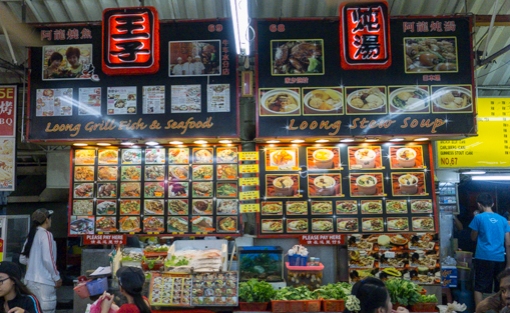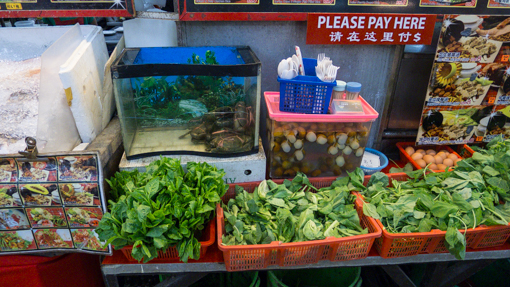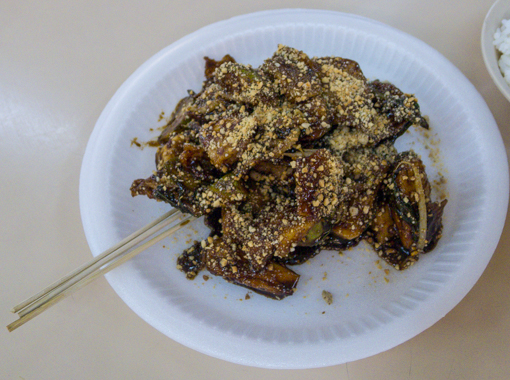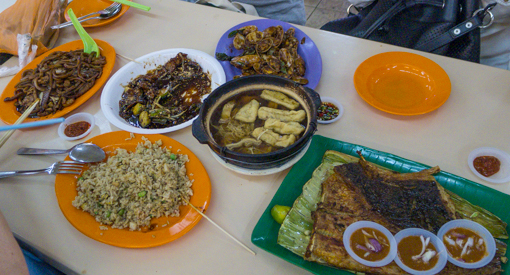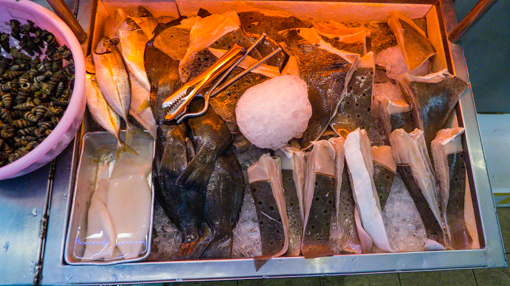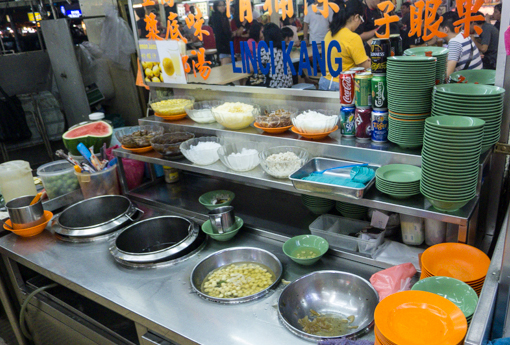After walking around for about 20 or so minutes in the street market, we came to the center where the food court is located. The food court is a bright and airy plaza which is covered (we can’t imagine what the night market would be like in a monsoon downpour which we experienced the day before in Melacca). But it was a fine evening when we were there.
There were almost 100 stalls or counters on either side of the plaza. Each are numbered clearly.
We guessed that these stalls are licensed by the local authorities. They do not want any unlicensed merchants to open business inside, otherwise, it will be just like the market outside.
Fixed tables are also numbered and installed in the middle. We were at No. 33A.
When patrons place an order, they mention their table number. When the food is ready, the stall owner brings it to the table and collect the money. For one of our dishes, the stall owner’s children brought the food – helping out the family after school.
For this stall, one has to pay first. The live crabs and snails must be worth a bit.
For dinner, we ordered only classic Malaysian dishes – starting with fruit rojack. The term “rojak” is Malay for mixture. According to Wikipedia, fruit rojak consists typically of cucumber, pineapple, benkoang (jicama), bean sprouts, taupok (puffy, deep-fried tofu) and youtiao (cut-up Chinese-style fritters). The thick dressing is made up of water, belacan (shrimp paste), sugar, chili, and lime juice.
We ordered bak kut teh 肉骨茶. Wikipedia says: the name literally translates as “meat bone tea”, and at its simplest, consists of meaty pork ribs simmered in a complex broth of herbs and spices (including star anise, cinnamon, cloves, dang gui, fennel seeds and garlic) for hours. Despite its name, there is in fact no tea in the dish itself; the name refers to a strong oolong Chinese tea which is usually served alongside the soup in the belief that it dilutes or dissolves the copious amount of fat consumed in this pork-laden dish. We had fried tofu puff, enoki and dried black shitake mushrooms in our pot.
The dish on the bottom-right with three small dishes of spicy sauces was our charcoal-grilled stingray, IT had it before and wanted to try again.
Back at stall no. 55 where we ordered it, the stingray portions were sold by weight – the grey wedges with white spots. It tasted like normal fish despite its appearance.
The stirred fried clams in a black bean, chili-based sauce was fantastic. We all loved it so much that we almost ordered a second plate.
We also ordered fried rice and the famous fried kuey teow which will be the subject of our next post.
This stall sold desserts. We had the classic cendol. Wikipedia says: the dessert’s basic ingredients are coconut milk, jelly noodles made from rice flour with green food coloring (usually derived from the pandan leaf), shaved ice and palm sugar (the brown substance). Other ingredients such as red beans, glutinous rice, grass jelly, creamed corn, might also be included.
Well, we did not get too many green jelly noodles here. Instead of noodles in solid pastel green (the traditional kind), we got some brighter green transparent chunks.
It was a fun and tasty dinner – we could have eaten more there – but we saved ourselves for the king of fruits – durian. J took us to a special place for durian … the post is coming up.

